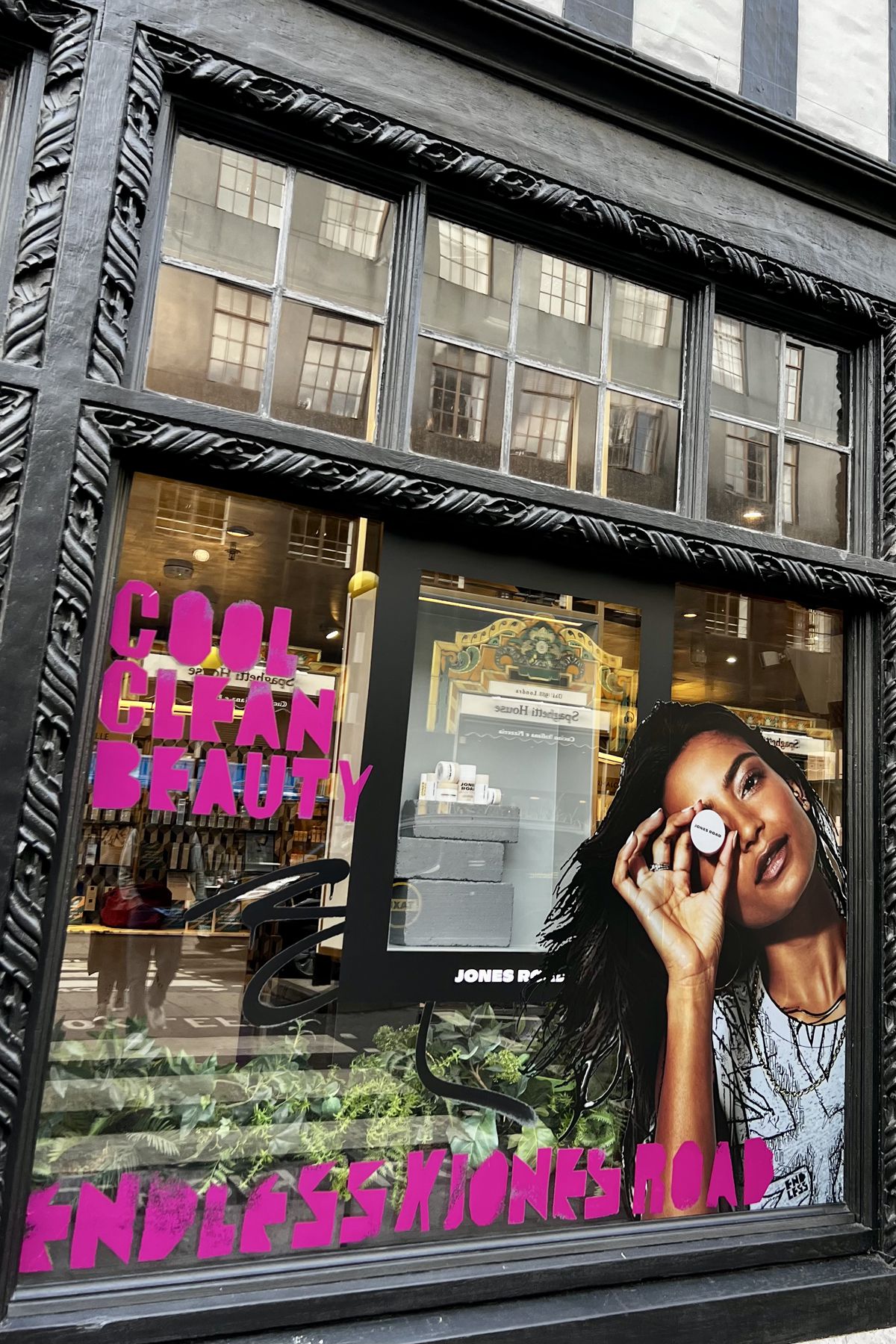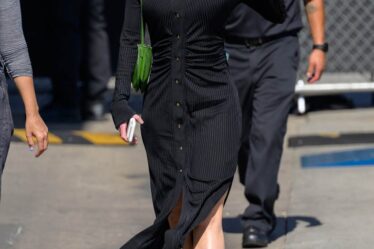
When Bobbi Brown decided to take her line Jones Road across the pond, she knew she wanted a physical touchpoint where shoppers could test out her viral Miracle Balms and Face Pencils in person.
Brown chose department store Liberty, known for its mock Tudor facade and decadent panelled interiors. It only has one store, a central London location a stone’s throw away from the hubbub of Oxford Circus, but Brown liked that, she said, as the line’s resources wouldn’t be stretched hiring staff and outfitting many locations. Liberty also provided crucial marketing support, including a whole-store window takeover for Jones Road’s launch last October and use of a private space to stage events.
“Liberty’s not the biggest, so we really firmly believe we’ve got to offer something very different — to both our customer but also our brand partners — in order to make us an appealing place,” said Sarah Coonan, managing director at Liberty.
Brown made the right call for Jones Road; the line is now the number one selling beauty brand at Liberty, among 126 other lines, including Augustinus Bader, Westman Atelier and Byredo.
“Liberty gave us a lot of real estate,” said Brown. “They have that creativity.”
For many emerging labels picking the right retail partner in the UK isn’t easy because of the highly fragmented distribution network. Shoppers can turn to drug stores like Boots or Superdrug, department store chains like John Lewis and House of Fraser on the high street or Selfridges, Liberty and Harrods at the premium end of the market. Meanwhile, Sephora recently landed in the UK, aiming to take on specialty retailers like Space NK, and that’s on top of fast-growing digital players like Cult Beauty, Look Fantastic and Beauty Bay.
But the UK market is a significant opportunity for growing lines, according to market research firm Euromonitor International, UK beauty sales reached £12.9 billion in 2022.
So how do brands choose? The Business of Beauty breaks down what to consider before mapping out a retail distribution strategy.
For both homegrown and international brands, landing in a retailer where your core customer already shops is a no-brainer.
“It sounds very obvious, but if you’re a premium brand, you’re not going to go into a drugstore retailer where there are discounted products on the shelf,” said Millie Kendall, chief executive of the British Beauty Council. “You have to align yourself with a retailer that has the consumer you’re after.”
For luxury fashion brand Dries Van Noten, which debuted its collection of lipsticks, perfumes, soaps, perfumes and accessories last year, that retailer was Selfridges, where customers already came to buy the brand’s runway collections. “They already were partners for us for fashion,” Ana Trias, Puig’s chief brands officer, told BoF last year. “It was a natural choice.”
In the case of Half Magic, the beauty line from TV show Euphoria’s makeup artist Donni Davy that launched in the UK last month, Gen-Z focused e-tailer Beauty Bay was a natural choice due to its younger customer base, said general manager Michelle Liu. “We also knew from their analytics that Beauty Bay consumers had been regularly searching their site for our brand for months before we launched,” Liu said.
But sometimes the customer might be in unexpected places. When eco-friendly, vegan skincare brand BYBI wanted to expand into physical retail, the line partnered with health food store chain Holland and Barrett. It wasn’t the most obvious choice for a buzzy Instagram brand, but co-founders Elsie Rutterford and Dominika Minarovic knew it was where their customer was already shopping for vitamins, flaxseeds and a packet of almonds, said Rutterford.
“We’ve really learned it almost doesn’t matter what the channel is; if that’s where your customer is, it’s worth having a presence there,” she said. “You will get that repetition, that brand awareness and ultimately make the end customer’s life slightly easier.”
E-commerce can be a good first step for young brands keen to avoid the costs that come with physical retail, such as shop fittings, staff training and visual merchandising.
“When we launched, those kinds of investments were quite far out of reach,” said BYBI’s Rutterford. BYBI partnered with fashion site Asos as its first retail partner in 2017, adding beauty e-tailer LookFantastic as a second stockist in 2020 before expanding into bricks and mortar in 2021.
Brands should consider the size of their product assortment: smaller capsule ranges are often better suited to online retailers, said Faye Speedie, founder of retail consulting firm BeautyBulb.
“If you don’t have the gravitas to be able to sit on the shelf and draw attention by having a number of SKUs, then you’re going to be getting lost in bricks and mortar,” she said.
Megababe, a body-positive beauty brand whose products tackle issues like thigh chafe and cleavage sweat, is stocked at thousands of Ulta Beauty and Target stores across the US. But when the brand arrived in the UK, founder Katie Sturino launched with digital retailers, to gather data and sentiment around which products resonated with British consumers. The brand plans to expand into brick-and-mortar next year.
“We’re not just innovating products, we’re innovating categories as well, and that means being able to use language that beauty marketers haven’t really used before,” said Sturino. “You just don’t know what people are going to respond to.”
An established retail partner can boost visibility and build a customer base for a young line, but just being stocked at Boots or Harrods doesn’t guarantee success.
Many retailers are keen to promote a new brand that is exclusively available in their shops. Space NK, a high-end speciality store with 75 doors across the UK, launched brands like Rare Beauty and Tatcha in the UK with buzzy pop-up events.
When Selena Gomez’s Rare landed in February 2022, the retailer opened a Rare Beauty café in Oxford Circus for two weeks, where shoppers could take part in makeup masterclasses hosted by local influencers before enjoying tea and cake. Tatcha’s two-week Covent Garden pop-up last summer included Origami and traditional Japanese flower arranging workshops. Space NK shares the financial investment required for these events with the brand, said chief commercial officer Margaret Mitchell, but did not detail exact terms.
“We use those spaces to bring brand stories to life and to help the brands communicate their entire brand positioning,” said Mitchell. “That is really what helps a brand land in a new market or a new retailer.”
Luxury department stores like Selfridges, Harrods and Liberty can prove splashy launch partners, thanks to their global brand recognition. They can also help establish credibility and drum up a following before scaling in the market. Fenty Beauty launched exclusively with Harvey Nichols in 2017, before debuting with Boots almost two years later.
Ultimately beauty brands should consider how much marketing muscle a retail partner has to support a partnership, said Kendall.
“To me, it’s like dating,” she said. “Who’s going to buy you the best dinner?”



